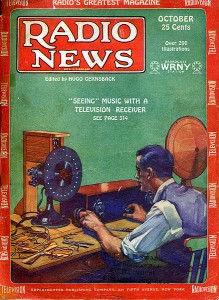Social media seems to dominate the conversation about corporate messaging these days—and every week brings a new story about the demise of traditional media. But it’s important not to oversimplify this equation. People still read newspapers (you can watch them do it at Starbucks or on the bus), listen to the radio in their cars, borrow books from the library, watch television daily, and flip through magazines at the doctor’s office. And businesses still have to use all these media formats strategically.
So 2010 State of the Media: An Analysis of the Changing Media Landscape by the Vocus Research Team is well worth a download. The report, which analyzes the status of conventional media and identifies developing trends, was discussed in a webinar recently—and here are some highlights I took away from the presentation:
The magazine sector will shrink, with some titles folding (especially in areas where there are close competitors, such as Self vs. Shape) and other titles publishing less frequently. There will be an increase in special editions on the print side, with digital distribution and on-demand content growing on the non-print side. New online magazines will continue to appear, especially in niche areas. Takeaway: Think beyond print when including magazines in PR strategy.
Newspapers are closing fast (especially weeklies) and launching infrequently. Staffs and coverage are shrinking. If there is good news in this sector, it’s not clear yet—but the trend is obviously toward more integration between paper and online delivery. Takeaway: Everyone is overworked at papers today, so maximize the chance of getting attention by targeting pitches carefully. Send exactly the right story angle to exactly the right person.
Cost-cutting in television may not be evident to the viewer, but it’s definitely going on. And the main casualty is news. There’s less coverage for soft news and in-depth stories, and in some areas talk shows are replacing newscasts. Staffers may have to manage online content as well as on-air reporting. Takeaway: Broaden pitches to go beyond the traditional newscast. Make the reporter’s job easier by offering extra content (fact and images) and high-quality b-roll for online use.
Radio has lost stations, jobs, revenue, and programming—but there is still a lot of strength in this sector. Although listening alternatives (satellite radio, MP3s, etc.) continue to increase, the majority of adults still get the majority of their audio from broadcast radio. Takeaway: Keep in mind that most radio stations now have websites and podcasts, so there’s a need for rich content. Think beyond sound bytes!
The webinar concludes with some good general advice: Remember that traditional media still matters, continue to maintain relationships, provide substantive content, and stick to the tried-and-true PR principles of accuracy, timeliness and relevance.
Vocus, by the way, is “a leading provider of on-demand software for public relations management,” offering a web-based software suite that not only facilitates media relations, news distribution and news monitoring, but also provides cool reporting functionality. They will actually reward you for taking a tour of the product—and it’s a fun trip, so why not?
(The technology magazine Radio News was started in 1919 by Hugo Gernsback, who became one of the most influential figures in science fiction publishing.)
Cynthia Giles has followed a serpentine career path from academia to publishing to marketing and design to information technology and corporate communications. There’s plenty of detail about this journey at www.cynthiagiles.com, but briefly--the common theme has been ideas, and how to present them effectively. Along the way, she became an accidental expert on data warehousing and business intelligence, and for the past ten years she has combined corporate contracting with an independent consulting practice that focuses on marketing strategy for smaller businesses and non-profits.
Having spent quite a bit of time looking for work, and anywhere from two weeks to two years inside a wide variety of American companies—she has given much thought to what works (and what doesn’t) when it comes to creating a great employment fit.




Hi Cynthia – thanks for mentioning the research and the Webinar. I think you’re spot on in your analysis and it’s good to know you found the research useful.